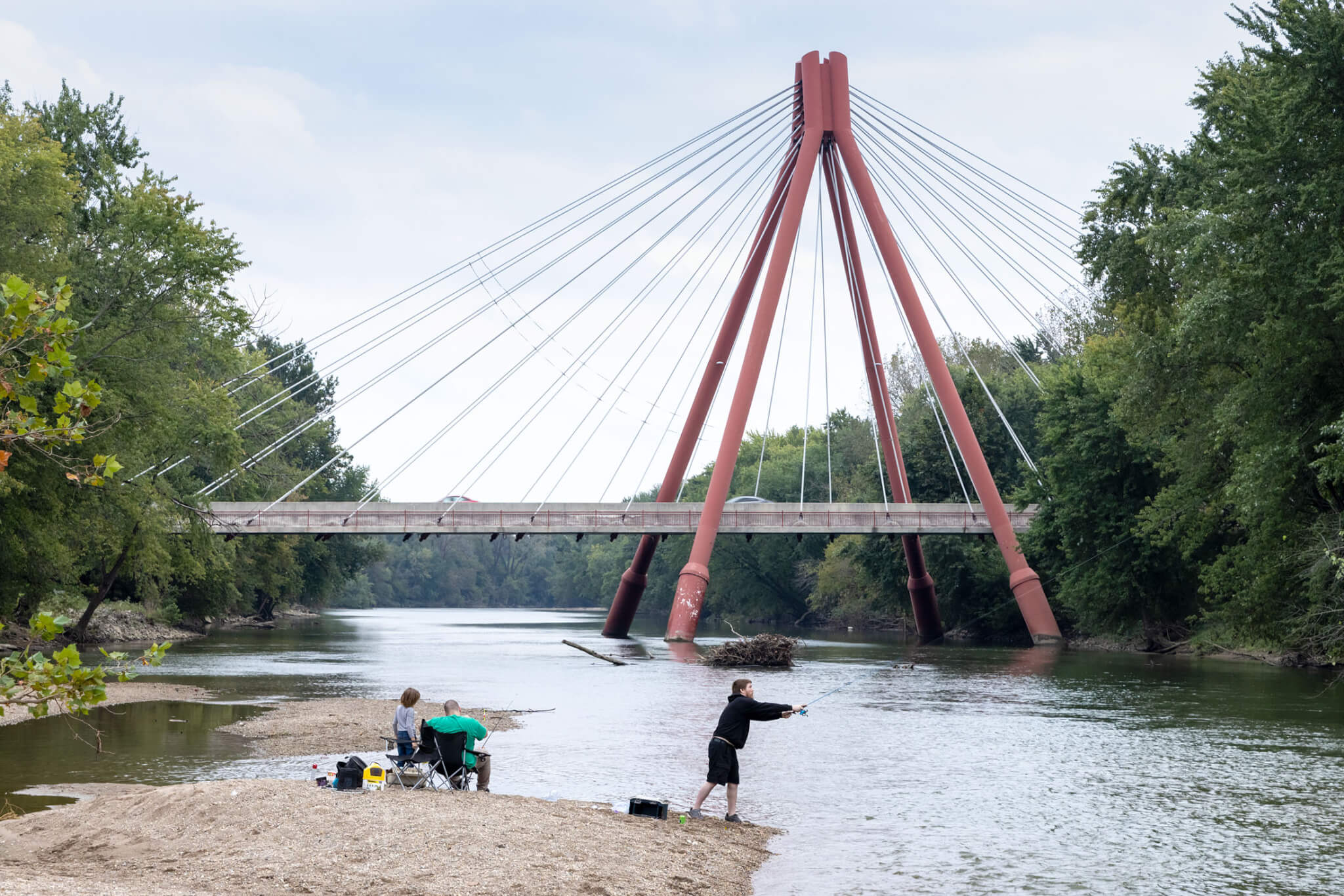American Modern: Architecture; Community; Columbus, Indiana
Matt Shaw, Photography by Iwan Baan
Phaidon
$75
Matt Shaw’s new book, American Modern: Architecture; Community; Columbus, Indiana, is a comprehensive story about Columbus, Indiana, and its architecture. Amply illustrated with archival material and contemporary photography by Iwan Baan, American Modern chronicles how Columbus became the testing bed for modern architecture that is today and how it grew out of a love for place and community.

Building Community
Like Shaw, I too am a product of “The Columbus Way,” as both of us grew up here. American Modern invites readers to become a part of our community, share in the passion we have for it, and to get to know its history as if you were one of us.
Despite my interest in the place, my goal since I was young was always to get out of town. I moved there in 2010 when my dad got a job at Cummins, a diesel engine manufacturer with a network of influence in the city. My childhood in the small, tight-knit community of about 50,000 people in southern Indiana was as normal as it could get. To me, the bank was just the bank, the post office was just the post office, and the school was just, well, the school.
Columbus North, my high school, gave students an opportunity to seriously explore architecture if they chose to. Luckily I did. I became involved in Landmark Columbus Foundation when I was a junior through participating in the Exhibit Columbus design festival. (Disclosure: The foundation was one of the main funders of Shaw’s book, and I remain involved with the organization.) From there, I became an active steward of Columbus’s built heritage, and I became more serious about architecture when I started thinking about college.
At that point in life, I never would have thought about coming back home for anything other than family and friends. But as I got more invested in the architecture around me, I discovered a beautiful community rooted in that aspect of my hometown. The second I left for architecture school, I kept finding myself wanting to stay involved with this network and the buildings we inhabit.

Total Community Project
Today, Columbus is a place where even the most mundane and tedious buildings (your community center, space of worship, or local courthouse) are some of the most thoughtful and well-designed spaces in the country. Shaw’s book tells this history. Baan’s photography offers vignettes of what life is like at home, with a seemingly unfiltered lens focused on buildings, their surroundings, and the people that use them.
I was able to spot people I knew—my neighbors, friends, colleagues, and teachers—at several moments when reading this book. Shaw and Baan’s rendition is so true to life in a way that I felt I could have been just out of frame in any number of photos. I imagine the same could be said for many Columbus natives. Furthermore, these photographs unite the buildings through showing the relationships between projects. This interconnectedness of place is a recurring theme throughout American Modern.

The main point behind the phrase “Total Community Project,” which Shaw uses frequently, derives from the notion that it took a sustained, multilateral effort in create the architectural experiment that is our Indiana city. This history challenges the popular myth, common around Columbus, that the story stemmed from a singular act of philanthropy by J. Irwin Miller, the businessman and architectural patron who lead Cummins for over 25 years. American Modern widens this story by representing the many parties involved in Columbus’s making. Shaw argues that Columbus is a collective phenomenon.
The book explains how a methodology of building architecture for the public developed stage by stage and how it has evolved as times have changed. Over the years, I’ve witnessed this process at work to make things happen for our community, some of which I’ve even had a hand in, like the production of biannual Exhibit Columbus or a mission to save Eliel Saarinen’s 1941 First Christian Church. This ambition to care for a place remains intact today, and it is rare to see such stamina endure over multiple generations. American Modern illustrates how a community’s thinking can become its culture.

“We all care about what we’ve got”
Not everyone in Columbus is the type to talk your ear off about the history of our place. However, we care about what we’ve got. We are a lucky community in the sense that very few of our cultural gems have been diminished or are in danger.
We are all shaped by where we are from. Growing up, I perhaps took for granted the strong community I had, both in terms of the people and the buildings. It takes strong and sustainable communities to keep things nice for future generations.
Many Columbus people my age aren’t necessarily invested in architecture, but we’re invested in Columbus. It is a testament to the book’s authenticity that American Modern has only strengthened the things I find to be true about Columbus.
The book, too, is part of the apparatus that keeps the city moving forward. There was buzz and excitement around this project, albeit in certain circles that knew of its existence. Our excitement only grew when the news was made public. It became another thing for us to rally around.
It’s a fitting thing that American Modern both depicts our slice of life and is a product of our slice of life. It should be celebrated for the communal effort it represents: a small town coming together to make our place known.
Eshaan Mehta is a student at the Pratt Institute School of Architecture. He is a native of Columbus, Indiana. He works with Landmark Columbus Foundation to help inspire the next generation of designers from Columbus. He is also a student board member at the Paul Rudolph Institute for Modern Architecture.

